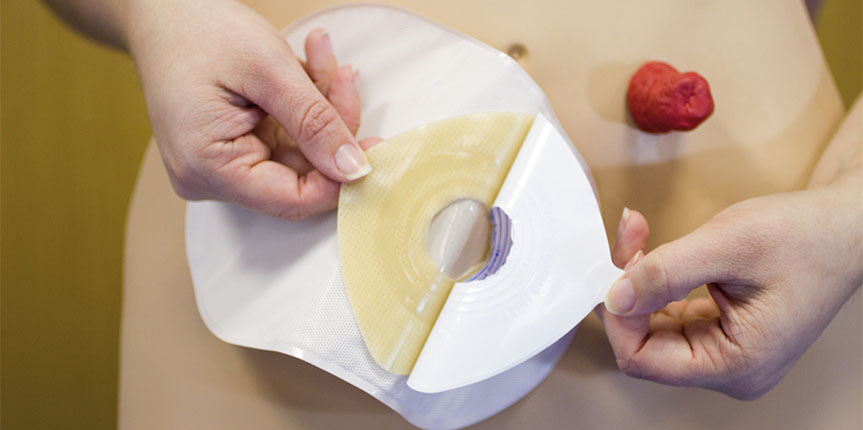Once a decision is made for a stoma, patients will be introduced to the stoma nurse specialist. The role of the nurse specialist should not be underestimated. They can provide counselling as well as information on the following:
- The stoma procedure
- Practical aspects – eg., types of stoma bags and various equipment available
- Reassurance that life can continue as normal – including bathing, showering and swimming (adhesive is waterproof).
- How to change bags
- How to detect and manage the most common problems – eg., bleeding on changing bags
Diet
- In the first few weeks after having a colostomy, it’s likely that you’ll be put on a low-fibre diet. This is because having a high-fibre diet can increase the size of your stools, which can cause the bowel to become temporarily blocked. After around eight weeks, you’ll usually be able to resume a normal diet.
- Ways to reduce gas formation and excessive odours include eating small, frequent meals, limiting foods such as cabbage, onions, beans and fizzy drinks, and avoidance of activities that encourage air to be swallowed, such as gum chewing, drinking through a straw and smoking.
- Charcoal tablets or anti-flatulent preparations may help to reduce odour.
- Limit intake of foods that have strong odours, such as onions, fish, eggs, cheese and asparagus.
Exercise
- In the weeks following surgery, it’s usually recommended you do some gentle exercise to help recovery.
- How well you recover will determine how much exercise you can do. If you feel any pain, stop immediately.
- All colostomy bags are waterproof, so you can go swimming.
Skin Care
- It is important to keep the skin surrounding the stoma scrupulously clean.
- Avoid skin care products that contain alcohol. These can make your skin too dry.
- Do not use products on the skin around your stoma that contain oil. These can make it hard to attach the pouch to your skin.
How to change your colostomy pouch?
You can change your colostomy pouch as often as you want, usually after a bowel motion.
One piece drainable pouches are usually replaced every 2-3 days according to personal preference. With two piece drainable systems, you can replace the pouch itself as often as required, and usually replace the baseplate once or twice a week.
- Make sure you have everything you will need immediately to hand.
- Start by emptying your colostomy bag.
- Wash your hands thoroughly using soap and water.
- Gently take the pouch off.
- Check your skin.
- Clean your stoma.
- Try using a skin barrier, such as stoma powder.
- Prepare the new pouch.
References:
http://patient.info/doctor/stoma-care
http://www.nhs.uk/Conditions/Colostomy/Pages/living-with.aspx


